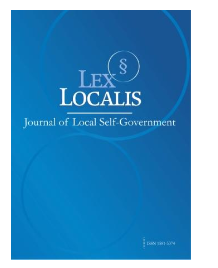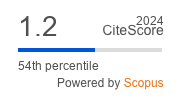IMPACT OF SOCIAL MEDIA VIRTUAL WORKPLACE AND AI TRANSLATION TOOLS ON CROSS -CULTURAL COMMUNICATION
DOI:
https://doi.org/10.52152/j7bsr237Ključne besede:
Virtual workplace, social media, AI translation tools, Cross-cultural communication,Povzetek
Cross-cultural communication has emerged as a key success factor in organizations in a world that is increasingly becoming globalized and where work is digitized. The increase in the popularity and use of social media, virtual workplace solutions, and artificial intelligence (AI) translation tools etc. the interaction, collaboration and knowledge sharing among employees who have diverse cultural background has changed drastically. This paper is a critical discourse of the ways through which these technologies are altering cross-cultural communication both in respect of its transformative potential and the challenge which accompany it.
With the possibilities of real-time collaboration and cooperation, promotion of diversity, and the geographical barrier, break, social media and virtual workplace services, provide more opportunities than ever before to communicate with other cultures. All these sites provide employees with a chance to establish interpersonal cross-cultural relations, exchange knowledge, and build cross-cultural digital communities that enhance a feeling of shared values. They also contribute to the threats of misinterpretation, stereotyping of cultures, and overloading of communication as a result of other cultural norms and digital etiquettes.
Smart assistants that can translate words may also be used to contribute to better intercultural communication, eliminating linguistic barriers, making transfer of knowledge a simpler task, and enabling non-native speakers to join the global conversation. Their capability to communicate across languages in real time creates immediateness and productivity in virtual work places. However, machine translation is also linked with several shortcomings including mistakes in context, lack of understanding of cultural variations, over-reliance on technology that can prove to be a hindrance to the intercultural competencies acquisition process.
This interactive mix, of these digital tools, highlights a two-way dynamic. On the one hand, they make communication more open and make global collaboration more empowered; on the other, they demand that cultural differences, digital literacy, and organizational planning be more sensitive in order to minimize the risks of miscommunication. As postulated in this paper, the effective management of cross culture communication in digitally mediated work environments is not merely dictated by availability of sophisticated tools but also, building intercultural awareness, adaptive communication skills, and organizational policies that ensure creation of a balance between technological and human mediated interactions.
Lastly, despite all these possibilities of social media, virtual workplaces and AI translation systems to assist in breaking cultural barriers, they must be applied cautiously to the organizational practices. Technology must be applied as an enabler rather than a substitution of human empathy, cultural knowledge and valuable global cooperation to achieve a strong cross-cultural communication.
Prenosi
Objavljeno
Številka
Rubrika
Licenca
Avtorske pravice (c) 2025 Lex localis - Journal of Local Self-Government

To delo je licencirano pod Creative Commons Priznanje avtorstva-Nekomercialno-Brez predelav 4.0 mednarodno licenco.








